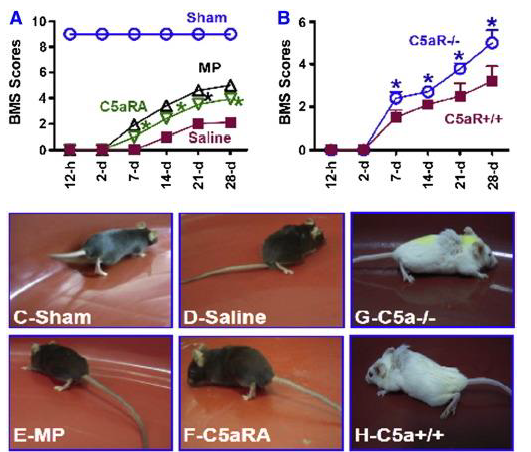Basso mouse scale (BMS)
motor function of rats

Basso mouse scale (BMS)
Behavioral Models _ motor function of rats
Basso mouse scale open-field score (BMS)
The animals’ locomotor performance was analyzed using the Basso mouse scale open-field score because it is a valid locomotor rating scale for mice. The evaluations were made by two blind observers for all analyzed groups. Briefly, the BMS is a 9-point scale that provides a gross indication of locomotor ability and determines the phases of locomotor recovery and features of locomotion. Early phase of recovery shows the resolution of paralysis and/or paresis progressed from no ankle movement to larger ankle movement and this is related to a score of 0–2. Plantar placing and the development of stepping occur in the intermediate phase of recovery, which requires score 3–4. In the late phase of recovery, paw position during stance, hindlimb–forelimb coordination and trunk stability are analyzed (score 5–8). Score 9 indicates the normal locomotor mobility, with trunk stability and refined performance. The score for each hindlimb was recorded as the average per animal (left and right hindlimb) to obtain one BMS score per mouse, and then the mean of the group was calculated.
For these tests, the animals were evaluated before injury, 24 h after surgery, and then weekly up to 8 weeks post-injury.

Related Content: Sciatic functional index (SFI) – Global mobility test (GMT) – Behavioral Model(BBB)